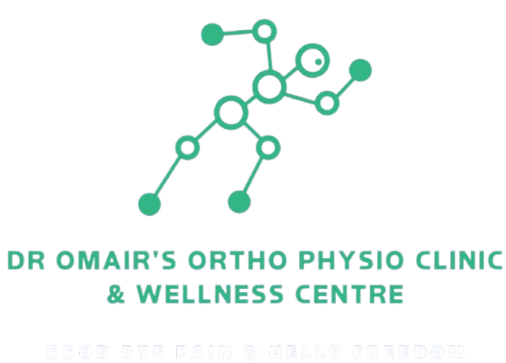Living with scoliosis doesn’t have to be restrictive. Experts suggest that integrating physiotherapy for scoliosis into your care plan can be a game-changer. By enhancing posture, mobility, and self-esteem, physiotherapy offers a non-invasive approach that can substantially improve quality of life for those affected by scoliosis.
Understanding Scoliosis and Its Impact
Scoliosis is a condition where the spine curves sideways. It’s not a one-size-fits-all situation, as scoliosis comes in different forms. Idiopathic scoliosis is the most common, affecting mainly children and teens. Reasons for scoliosis can be varied, ranging from congenital disabilities to neuromuscular issues.
The prevalence of scoliosis means that many people experience its effects daily. It can impact life in several ways, changing how you stand, move, and even breathe. People often find their posture altered and mobility restricted due to back pain.
Despite how common scoliosis is, there are many myths surrounding the condition. Some believe only surgery can fix scoliosis, but this isn’t the case. Others think scoliosis prevents a normal life, which is also untrue. In reality, with the right care, including physiotherapy for scoliosis, many live active, fulfilling lives.
Why Physiotherapy is Essential in Scoliosis Management
Physiotherapy for scoliosis offers a non-surgical pathway to managing the condition. It’s great for those who prefer a less invasive treatment. Physiotherapy steps up to realign the spine gently, helping improve posture and overall function. People who incorporate physiotherapy often note a significant difference in their day-to-day experiences.
Beyond physical benefits, physiotherapy for scoliosis also boosts mental well-being. Improved physical health can mean enhanced self-esteem and less anxiety about future mobility. Simply feeling better can elevate one’s mood and outlook on life.
The Mechanics of Physiotherapy for Scoliosis
Physiotherapy begins with a personalized assessment. A physiotherapist will evaluate how scoliosis affects you specifically. This helps to create a plan tailored to your unique needs.
Here are a few therapy techniques often used:
Core-strengthening exercises: These help stabilize the spine and improve balance.
Postural correction: Specific exercises that encourage correct posture and spinal alignment.
Schroth Method: A specialized technique focusing on breathing and postural muscle activation to reduce the spinal curve.
Through such practices, physiotherapy for scoliosis addresses both the physical presence of the curve and its broader impact on daily life.
Achievements and Gains: Benefits of Physiotherapy
The benefits of physiotherapy for scoliosis are multifaceted. For one, pain relief is a significant outcome. Many find their level of discomfort decreases dramatically with regular therapy.
There’s also the significant advantage of halting curve progression, especially crucial for young people. Timely and consistent physiotherapy can keep scoliosis from worsening.
Real-life stories abound where individuals show notable progress. A teenager who joined a dance class after therapy. An older adult reports renewed energy to enjoy hobbies. These testimonials illuminate how physiotherapy for scoliosis can enhance someone’s comfort, appearance, and self-confidence.
Demystifying Myths About Physiotherapy for Scoliosis
Despite what some think, physiotherapy for scoliosis doesn’t cure; it manages. This is essential because it sets realistic expectations around therapy. Different age groups might experience varied results, depending on several factors like flexibility and commitment.
Another myth is that results come quickly with minimal effort. In reality, consistent patient participation over time is key to achieving the best outcomes. Patience and regular sessions go hand-in-hand for effective physiotherapy management.
Making the Most of Physiotherapy: Expert Advice
Understanding physiotherapy for scoliosis is the first step. Finding a specialist can make all the difference. In India, many talented physiotherapists focus specifically on scoliosis management.
Before beginning, prepare for your initial sessions. Set practical expectations. It’s less about immediate results and more about gradual improvement. Also, incorporating exercises into your daily routine without disrupting life will foster enduring changes.
A Collaborative Approach: Integrating Physiotherapy in Comprehensive Care
Effective scoliosis management calls for a teamwork approach. Physiotherapists regularly collaborate with orthopedic specialists. In India, this combined effort enhances the overall care plan.
Bracing, for instance, can work alongside physiotherapy to achieve better results. Both treatments focus on preventing spine curvature from worsening and improving function.
Experts stress personalizing care plans. No two individuals respond the same, so having a dynamic, responsive plan to manage scoliosis is beneficial. It’s a team game where open communication ensures that you get the most out of physiotherapy for scoliosis.
Conclusion: Embracing a Positive Journey with Scoliosis
To sum it up, physiotherapy offers a powerful route for improving the lives of people with scoliosis. It’s transformative, helping with both physical alignment and emotional resilience.
Reaching out early to professionals, forming a strategy that’s individualized, and committing to regular sessions can pave the way for a hopeful journey ahead. Physiotherapy for scoliosis embodies a beacon of positivity, showing individuals they can live well even with a spinal curve.

